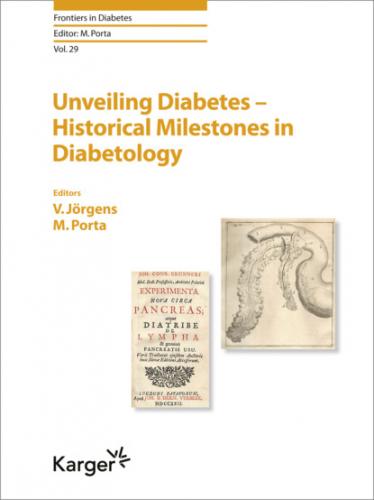Fig. 3. Handwritten by Claude Bernard: “I baptize this substance glycogen” [2].
Following this observation, Claude Bernard wrote in his little notebook: “I don’t understand anything anymore!” (“C’est à n’y rien comprendre!”)
In his key publication De l’origine du sucre in October 1848, Claude Bernard summed up the results of his numerous experiments: “Normally in the blood and the liver there is always sugar. This sugar is produced by the liver. This is independent of the nutrition with sugar or carbohydrate. This synthesis of sugar starts already before birth and it is therefore totally independent of nutrition” [1]. This discovery was the beginning of modern metabolic research and, soon afterwards, Claude Bernard became famous all over the world.
When carrying out his experiments, martial law prevailed in Paris, which was only abolished on October 12,1848. A total of 5,000 rebellious workers had been killed by the army in Paris during the desperate June Revolution. While Claude was sacrificing dogs in his laboratory, 25,000 people went to prison after the failure of this first proletarian revolution in Europe. In December 1848, Louis Napoleon (Napoleon III) was elected as 1st President of the Republic of France with 74% of the vote. Claude’s fame would soon begin to shine like that of the last French Emperor. Politically, Bernard cannot be called an anti-royalist, it is known that he even made some critical comments against the liberal political ideas of Rudolf Virchow.
The Discovery of Glycogen
The next highlight in the career of Claude Bernard was his discovery of glycogen and its role in metabolism. On September 24, 1855, he reported to the medical academy in Paris: “Once having washed the liver with water 24 h later you can discover glucose in the vena hepatica. There must have been a production of new glucose. Where does it come from?” Finally, in February 1857, he isolated glycogen and wrote in his notebook: “I baptize this substance glycogen” (Fig. 3). The summary of the work was published in 1857 as “Nouvelles recherches expérimentales sur les phénomènes glycogéniques du foie” [3].
La Piqûre Diabétique
Another observation he became famous for during his lifetime was his “piqûre diabétique” (Fig. 4). On April 3, 1849, Claude Bernard punctured the fourth ventricle of a dog (and later in numerous other animals). Twenty minutes later glucosuria occurred, and 2 h later it was even more pronounced. He published this discovery, discussing the possibility of a central nervous origin of diabetes [4, 5]. The title of his exuberant first report to the biological society [4] was: “Chiens Rendus Diabétiques.” The use of the plural, however, was wrong. The experiment was positive in only 1 of the dogs, at least 3 others did not become diabetic. For decades, these experiments were an argument for a neuronal pathogenesis of diabetes even if his experiments were difficult to repeat. Some of the effects of Bernard’s “piqûre diabétique” may simply be explained by the terrible stress the tortured animals had been forced to endure.
Fig. 4. Drawing by Claude Bernard explaining the “piqûre diabétique” in a rabbit, from the archives of the Collège de France [9].
Honorem ei, qui meritur
After these discoveries, one honor followed the next. In 1849 the red ribbon of the Legion of Honour was conferred upon him. In 1854 he became a member of the Academy of Science and was named for a Chair at the Sorbonne (Fig. 5). However, he never enjoyed lecturing there, preferring to give lectures in the Collège de France, where, in 1855, he finally succeeded Magendie. In 1861 he became a member of the Medical Academy and, in 1868, was elected to become one of the “immortal” members of the Académie Française. His seat was number 29, just in front of Saint-Marc Girardin, who had declined his career as a writer. He prepared his speech in the Académie very carefully, as can be seen in the copy of his draft. He must have spent a lot of time training for his talk during his summer holidays in St. Julien since he was far from being a renowned orator.
In 1869 Claude was appointed Senator by Napoleon III. The Emperor had decided to transfer the Chair of Physiology to the Natural History Museum with a far larger laboratory. Now he was even closer to the chemist Prof. Michel Eugène Chevreul, director of this museum for many years. The two had been personal friends since 1850. Chevreul, who had “baptized” cholesterol (“cholesterine”) in 1815, died at the age of 102 in 1889. The names of both are engraved below the roof of the museum. In his Introduction into Experimental Medicine Claude Bernard mentions that his book does not add much to the thinking of his friend Chevreul.
Fig. 5. A page of the speech given by Claude Bernard at the Académie Française, with his numerous corrections [2].
Experimental Medicine
The book Introduction into Experimental Medicine (1865) was his intellectual masterpiece [6]. Claude Bernard explains the principles of biomedical research, and much of its text is still relevant today. His remarks regarding pharmacotherapy can still serve as an introduction to today’s textbooks on “evidence-based medicine.” He wrote: “There are physicians who are fanatical about the effects of the drugs they prescribe. They do not accept critical comments which are based upon experiments. They say you can only prescribe drugs which you believe in, and they think that prescribing a drug to a patient you doubt about shows a lack of medical ethics. I don’t accept this way of thinking, it means deceiving oneself and deceiving others.” It is not astonishing that Claude Bernard had thus created vehement enemies among his clinical colleagues – no physician enjoys being called a deceiver!
Fig. 6. Original instruments used by Claude Bernard in the laboratory of his summer residence (Claude Bernard Museum, St. Julien; photo Dr. V. Jörgens).
